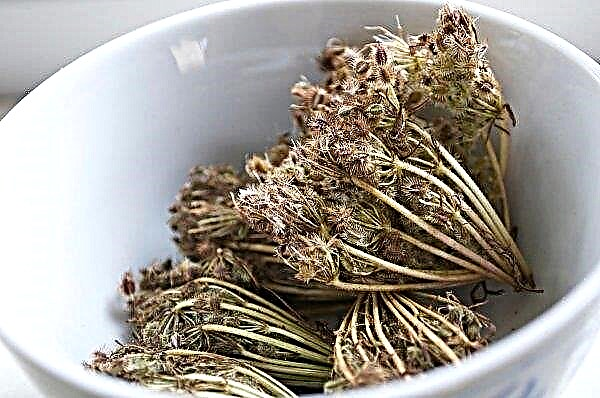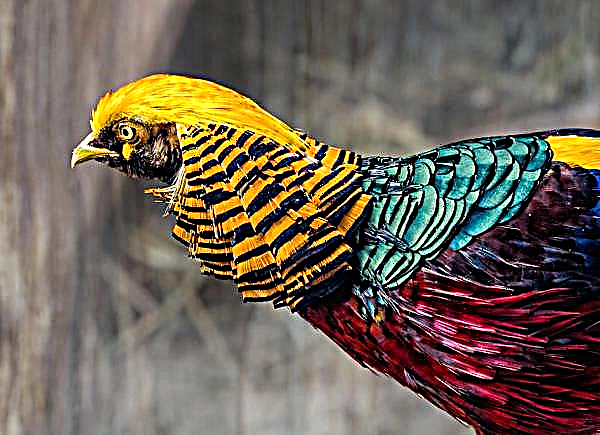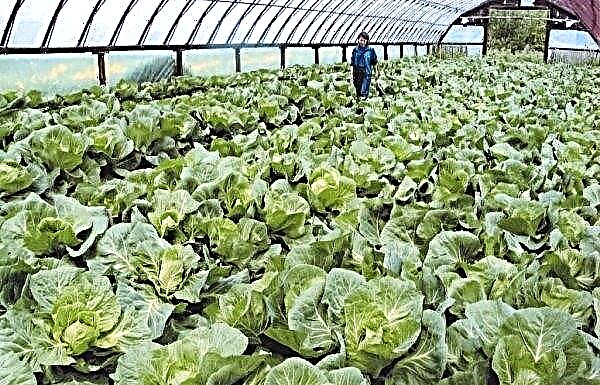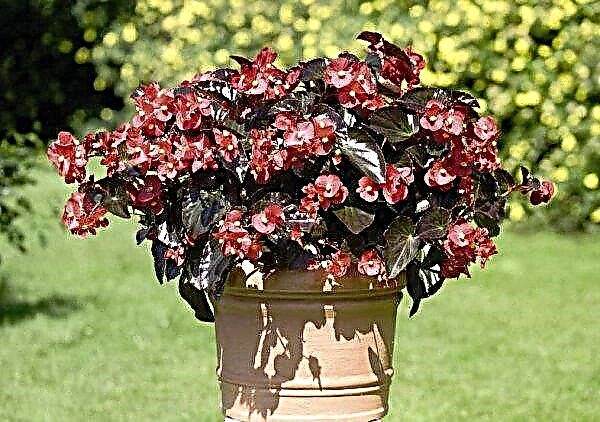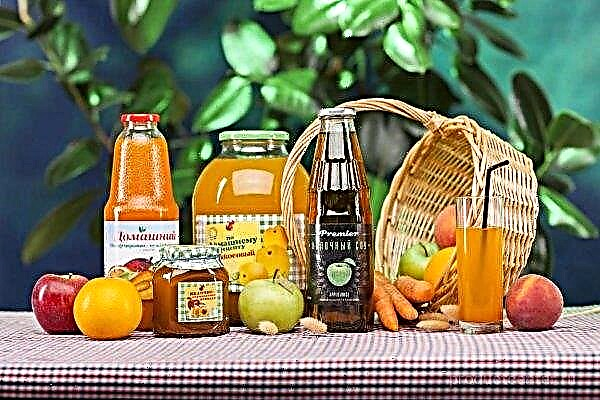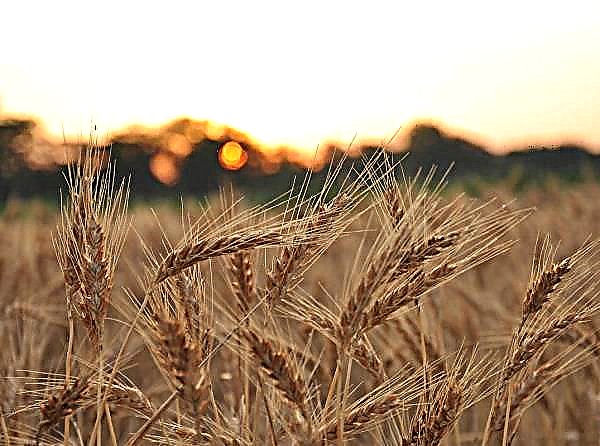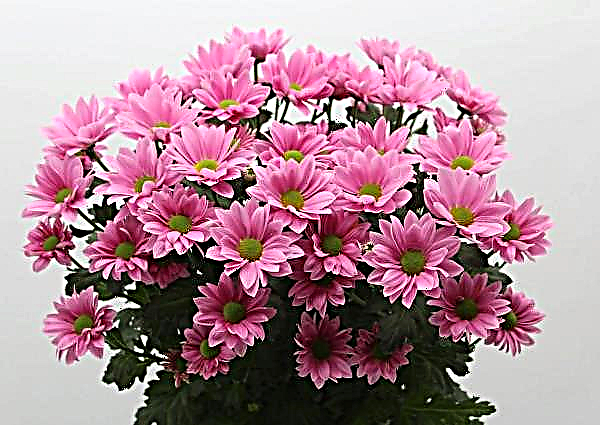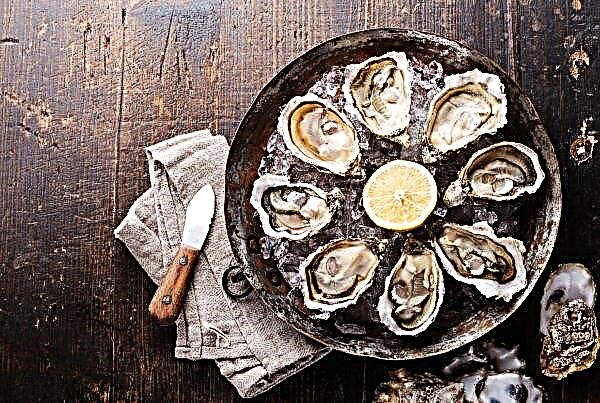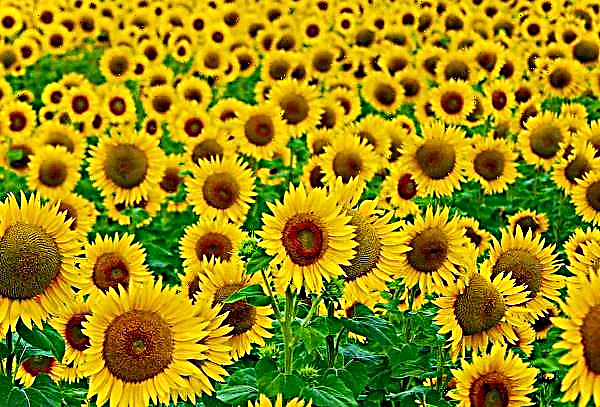Aphid is the main pest of cabbage, regardless of the plant variety, which is very susceptible to this parasite. Every year, gardeners and farmers are forced to make a lot of efforts to combat these small insects. How to deal with aphids, discussed in this article.
Pest Description
Aphid is a small sucking insect that affects many crops, but it is especially partial to cabbage. Adult individuals are up to 2 mm in size and are black, gray or dark green in color. They are able to eat developing forks in a few days.
The female lays many eggs on weeds at the end of September, from which fast-growing larvae hatch in the spring. By mid-summer, adults grow wings, and they are able to damage large areas of plantations.
Important! From time to time (for example, weekly) it is necessary to inspect the plants in the garden or in the field. This will help to detect pests in time and prevent their spread.
These insects settle on the lower part of the leaves and for a long time, until the appearance of painful symptoms on the plant, can go unnoticed. Moreover, in the first half of summer, only females are born, and after mid-July, males are born, fertilizing females for laying offspring in the next spring.
Signs of the appearance of aphids
Signs of the appearance of the pest are the following changes in the appearance of cabbage:
- leaves turn pale and brittle;
- the flesh between the veins becomes dry, yellow and smolders;
- the bush lags behind in development;
- the surface of the plant becomes sticky;
- in the later stages of the lesion, the leaves become shapeless, twisted, lifeless.
Another interesting sign of aphid settlement on cabbage leaves is the appearance of black ants scurrying back and forth.
Why does aphid appear on cabbage
Cabbage for aphids is a “native home”, since the parasite is born and develops on this vegetable, after which it attacks the surrounding plants. But to lay eggs, insects return to cabbage. This is due to the fact that the leaves of the plant are juicy, tasty and contain many useful substances not only for humans, but also for insects parasitizing on it.
Did you know? The aphid's life cycle is fleeting - during the warm season it can change 20–30 generations of parasites.
What to do and how to process cabbage at home
For many years, people have been fighting pests of domestic crops, including aphids. How to get rid of it is determined by chemists, naturalists and ordinary gardeners by trial and error.
Chemicals
Large plantations or heavily parasitized garden plots are treated with industrial chemicals. There are various insecticides suitable for fighting aphids: Fitoverm, Iskra, Aktara, Karbofos and others.
All of these drugs have a similar mechanism and duration: adults and larvae die during the first hours of the chemicals. The effect of the composition on the bush lasts about 20 days, after which colonies of parasites can appear from “flying” insects.
When using insecticides, you must carefully read the instructions and carefully comply with its requirements. Spraying, breeding or mixing are carried out in personal protective equipment - gloves, mask, respirator.
A huge minus of chemical preparations is their possible effect on random passers-by, animals or beneficial insects.
Folk remedies
Folk methods of fighting aphids on cabbage have been developed for centuries. And if the damage to the site by these insects is not global, before applying powerful chemistry, it is worth trying the old methods.
You can apply the following tools:
- Soap solution. It is used both for prevention and for controlling insects at the initial stage of plant damage. A strong solution of toilet or tar soap washed sheets and stems.
- Ash with tobacco. 200 g of ingredients are thoroughly mixed and infused in a bucket of water. The solution is watered with cabbage leaves.
- Soap-ash infusion. 200 g of ash are poured into 2-3 liters of soapy water, the liquid is mixed and the bushes are watered.
- Onion-garlic solution. A head of garlic and two onions are chopped and boiled in 1 liter of water. 10 liters of water are added to the resulting liquid and sprayed on cabbage.
- Vinegar. Dilute in half with water and spray the plants with this liquid.
- Vodka. A 40 ° drink is used to spray adult bushes, but to protect young cabbage, it is better to dilute vodka in half with water.
- Serum. 1-1.5 l of whey is poured with a bucket of water. Such a solution is sprayed with leaves, stems and earth near the bush.
 If aphid has appeared, you can also use infusions of various medicinal plants (celandine, yarrow, bitter pepper, dope, horse sorrel), a solution of mustard powder, an extract of citrus peel, and even Coca-Cola, which contains phosphoric acid, which is harmful to insects.
If aphid has appeared, you can also use infusions of various medicinal plants (celandine, yarrow, bitter pepper, dope, horse sorrel), a solution of mustard powder, an extract of citrus peel, and even Coca-Cola, which contains phosphoric acid, which is harmful to insects.Important! It is not necessary to apply the same method from year to year, since insects can get used to and adapt to it, therefore it is better to alternate several different types of processing during the season and change their components and sequence next year.
Biological products
An interesting and ecological way to destroy parasites is to use natural enemies against them. Everyone knows from childhood that such a nice insect as a ladybug eats aphids with pleasure.
But so that it would not be accidentally arrived "suns", they need to equip a place to live right on the site. It can be a board, a stick or a log laid on the ground.
The ubiquitous titmouse also loves to eat cabbage pests. You can attract more of these useful birds to your site with the help of feeders hanging around the perimeter. Feeding birds will be located near the plantation and will help in the fight against pests.
Preventive measures
Preventive measures are simple measures. Often the same procedure helps to repel not only aphids, but also other parasites. The easiest way to neutralize the parasite immediately after its appearance. As practice shows, you can remove insects with your hands, and even better, crush them on the leaves. The following procedures are used to prevent the invasion of harmful insects:
The following procedures are used to prevent the invasion of harmful insects:
- visual inspection - carried out as often as possible, special attention is paid to the lower parts of the leaves above the ground;
- treatment with a soapy solution may not be carried out for treatment, but to deter pests;
- whitewashing the trunks of the surrounding trees with lime so that they do not become a haven for parasites;
- burning weeds in places of their weeding, and not carrying through the entire garden;
- compliance with the correct crop rotation - one year before planting cabbage on the site, you can grow any greens, root crops or legumes;
- moderate watering - no need to overmoisten the soil around the plants.
Did you know? Aphids secrete a sweetish liquid - “honey dew”, which is a treat for some species of ants. They bring the flea into the anthill, feed it with greens and stroke the abdomen with its antennae or paws, after which the aphid releases the liquid that is desired for the ants.
The fight against aphids on cabbage is a rather complicated process, even with the use of modern means. So in this case, it is better to show excessive attention to their plantations in order to prevent their defeat by harmful insects.

